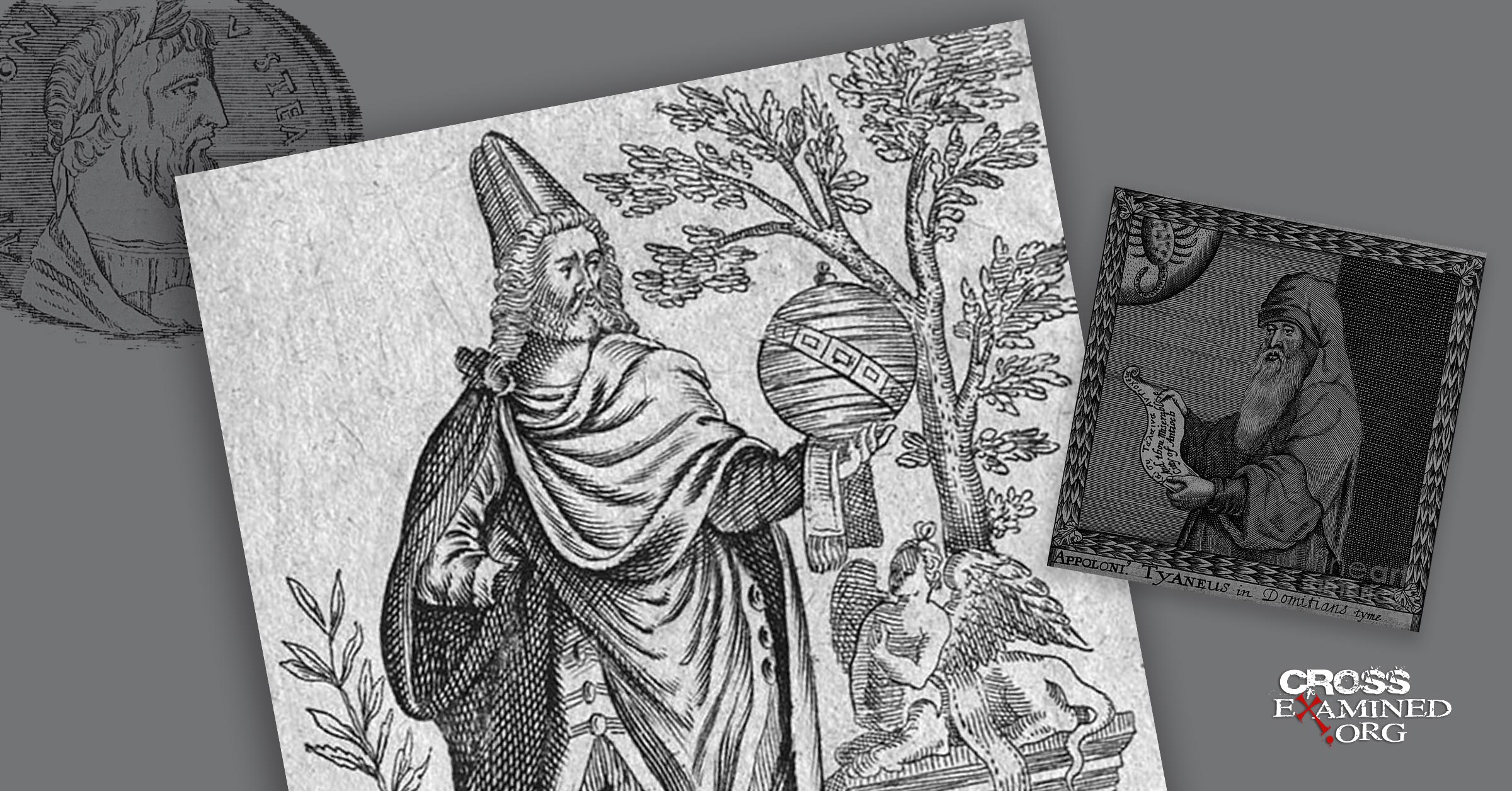Every Christmas and Easter, I tend to get into conversations about Jesus with people who see Christianity differently. But I’ve also found that even Christians can ask questions raised by skeptics in the public square like, “Was Jesus married?” Often times, Christians find challenges to the Bible’s portrayal of Jesus in a popular book, movie, YouTube video, or somewhere online and wonder how to respond.
Recently, the question of whether or not Jesus had a wife has come up again. So, was Jesus married?
There is no ancient evidence that explicitly tells us that Jesus was married. But raising the question makes a good conspiracy theory. For example, think about popular conversations surrounding Dan Brown’s novel, The Da Vinci Code, and the alleged “Gospel of Jesus’ Wife” fragment. Still, it’s not the kind of thing that historians who study Jesus professionally spent a lot of time debating. In fact, there is a virtual consensus among professional Historical Jesus scholars that Jesus was single.
In this post, I share four challenges to this virtual consensus and show how historical data can help us understand cultural concerns. (1) Was Jesus Married to Mary Magdalene? (2) Was Jesus Married to the Woman Who Anointed Him? (3) Was Jesus Married Because He was a Rabbi? (4) Was Jesus Married Because He was Jewish?
Was Jesus Married to Mary Magdalene?
Why might some people think that Jesus was married? Here are four culturally-based questions that tend to come up in conversations about Jesus’ marital status.
First, it wasn’t common for Jewish women to travel or live alongside men in Jesus’ culture. So, some people wonder if this was socially acceptable only because Mary Magdalene was Jesus’ wife. But Luke says that there were three women who travelled with Jesus: Susanna, Joanna, and Mary Magdalene (8:1-3) And he doesn’t say anything that links Mary to Jesus as a wife at all. Beyond this, Jesus was known to challenge cultural views of how men and women should relate to one another, so operating outside the norm by letting women minister alongside him wasn’t a departure from his modus operandi. Later, as Jesus was dying on the cross, he didn’t show any special attention to Mary Magdalene, but instead gave special attention to his mother and John.
Was Jesus Married to the Woman Who Anointed Him?
Second, some people wonder if the sinful woman who anointed Jesus was actually his wife (Luke 7:36-50). They reason that the whole situation wouldn’t have been as offensive to a Jewish audience if the woman was married to Jesus. But Luke reports that the whole situation was in fact offensive, which is why the Pharisee said “If this man were a prophet, he would have known who and what sort of woman this is who is touching him, for she is a sinner” (Luke 7:39). That objection wouldn’t make a lot of sense if the woman was Jesus’ wife.
Was Jesus Married Because He was a Rabbi?
Third, some people argue that since Jesus was a rabbi, he would have gotten married because that was the tradition of the rabbis. But this starts from a faulty premise. Even though people called Jesus, “teacher” and “rabbi,” he actually wasn’t a rabbi in any official Jewish capacity. This is one reason why the Jewish leaders were often challenging his authority to interpret the law. Beyond this, his teaching about becoming a (metaphorical) eunuch for the sake of the kingdom seems to relate to his own example of singleness and devotion to God (Matthew 19:10-12).
Was Jesus Married Because He was Jewish?
Fourth, some say that Jesus had to be married because he was Jewish—as if all Jewish men in the first century felt compelled to marry by their culture. But this just isn’t true. Again, it’s based on a false premise. We know there were first-century Jews who chose to remain single. And their singleness was nothing to be ashamed of in their culture. Some people even looked up to them for it.
A Hellenistic Jew, Philo of Alexandria, wrote that not all Jews thought they had to be married. In fact, some very pious Jews tried to avoid being married as part of their religious devotion (Hypothetical 11.14-17).
The Essenes were a Jewish sect that produced the Dead Sea Scrolls discovered in the Qumran caves. They were very concerned about being faithful Jews. These Jews didn’t think they had to be married and chose to be celibate for religious reasons. For them, it helped them keep God as their top priority. Still, archeologists have discovered evidence that there were a minority of women who lived alongside the men at Qumran. This goes to show that Jewish women did live alongside some pious Jewish men who chose to stay single.
The first-century Jewish historian Josephus wrote that, for the Essenes, celibacy was not required, but it was strongly encouraged. He said that they admired abstinence, even to the point where they “neglect wedlock” (Jewish War 2.8.2.121-22).
Josephus also said that many Jews admired the Essenes because of their religious commitment (Antiquities 18.1.5.20). So, not all Jewish men felt compelled to get married, and their singleness was nothing to be ashamed of because it was part of their religious devotion. Paul actually mentions a similar idea in a Christian context (1 Corinthians 7). Which brings me to an extra observation.
Paul on Marriage and Singleness
Here’s a little bonus: It’s interesting to see how Paul does not refer to Jesus in a couple of discussions about marriage and singleness. On the one hand, he didn’t appeal to Jesus while telling the Corinthians about how a pastor had the right to be married (1 Cor 9:4-7). If Jesus was married, this would be the perfect place to say, “Since Jesus was married, all pastors can be married, too.”
On the other hand, when Paul gives his own personal advice about staying single, he doesn’t mention Jesus either. This is because he wasn’t telling Christians that they had to stay single in order to be fully devoted to God. So, he didn’t want to say, “Since Jesus was single, all Christians should be single, too.” Jesus never taught that, and putting an end to families would spell the end of the Christian movement! Still, my point is that Paul’s silence about Jesus’ marital status in these discussions makes good sense if Jesus was single.
Jesus was Single
So, was Jesus married? No. All the data supports the virtual scholarly consensus that Jesus was single. Contrary to what some might say about first-century Jewish culture, a pious Jewish man could remain single and have no problem fitting in with Jewish society. Jewish culture did understand and appreciate singleness, especially when connected to a lifestyle of religious devotion.
Recommended resources related to the topic:
Jesus, You and the Essentials of Christianity – Episode 14 Video DOWNLOAD by Frank Turek (DVD)
Jesus Among Other Gods: The Absolute Claims of the Christian Message (book) by Ravi Zacharias
Mikel Del Rosario helps Christians explain their faith with courage and compassion. He is a doctoral student in the New Testament department at Dallas Theological Seminary. Mikel teaches Christian Apologetics and World Religion at William Jessup University. He is the author of Accessible Apologetics and has published over 20 journal articles on apologetics and cultural engagement with his mentor, Dr. Darrell Bock. Mikel holds an M.A. in Christian Apologetics with highest honors from Biola University and a Master of Theology (Th.M) from Dallas Theological Seminary where he serves as Cultural Engagement Manager at the Hendricks Center and a host of the Table Podcast. Visit his Web site at ApologeticsGuy.com.
Original Blog Source: http://bit.ly/2YyEl63












